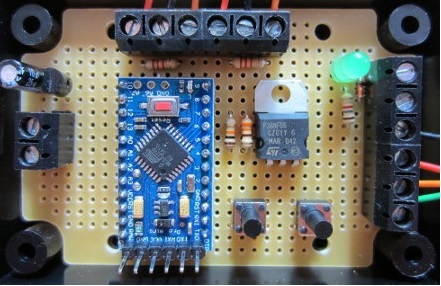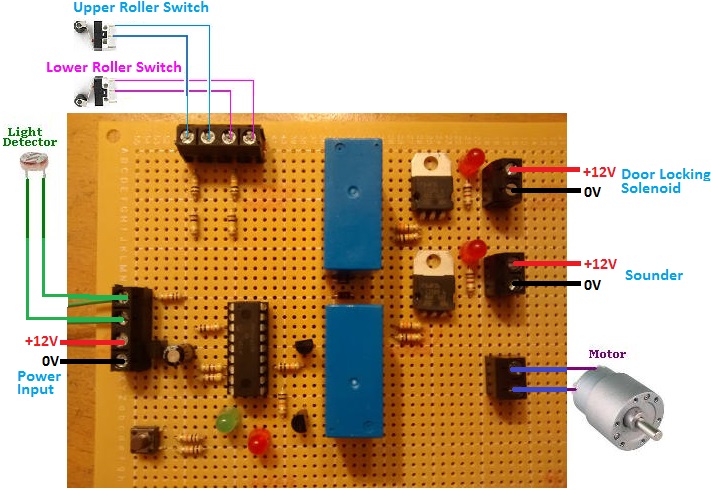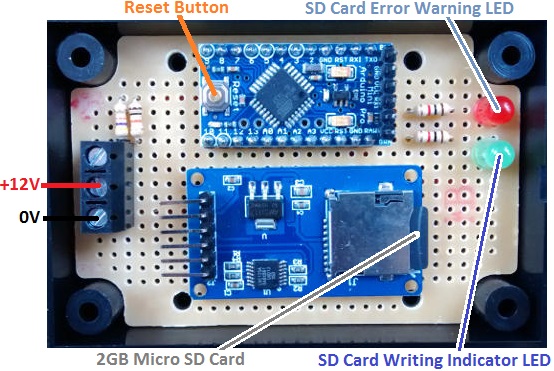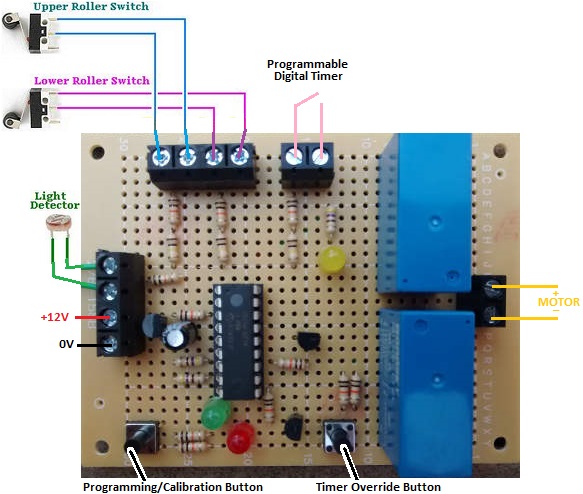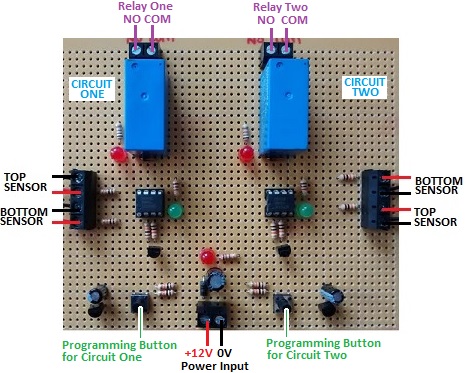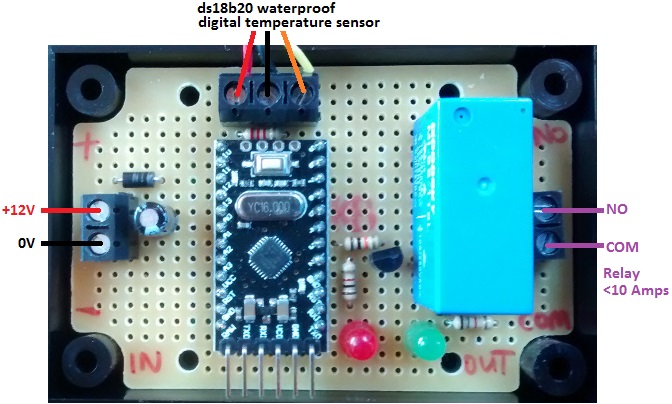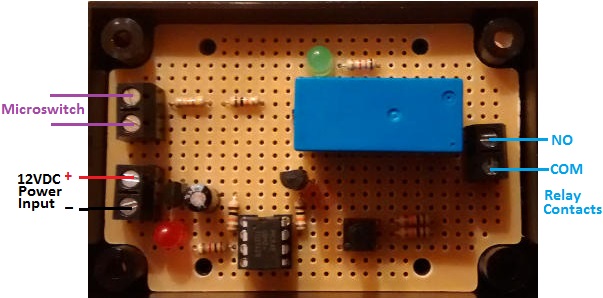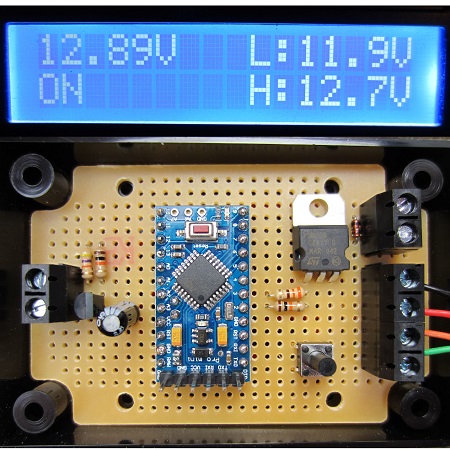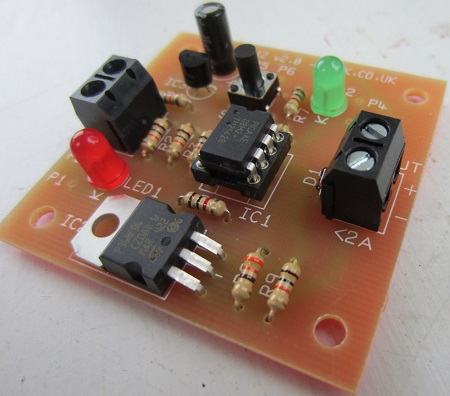Pictured below is a time lapse photography controller we recently made for a customer who is using it at a remote site.
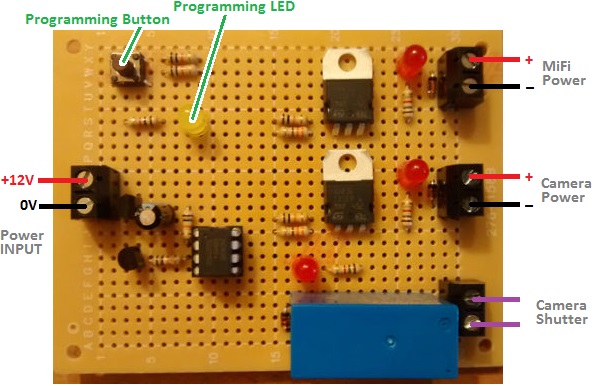 Rather than leaving the camera and MiFi (mobile Wi-Fi hotspot) constantly powered (necessitating a large battery), this controller turns them on only when they are needed – first MiFi is turned on, then 45 seconds later the camera is turned on, and then a further 15 seconds later a relay tiggers the camera shutter to take the photograph. The camera and MiFi are then left on for a further three minutes (so that the photograph can be processed by the camera and uploaded).
Rather than leaving the camera and MiFi (mobile Wi-Fi hotspot) constantly powered (necessitating a large battery), this controller turns them on only when they are needed – first MiFi is turned on, then 45 seconds later the camera is turned on, and then a further 15 seconds later a relay tiggers the camera shutter to take the photograph. The camera and MiFi are then left on for a further three minutes (so that the photograph can be processed by the camera and uploaded).
A programming button is provided which enables the photographer to take one shot every 5, 10, 15, 20, or 25 minutes etc, and once set up, this controller will run autonomously indefinitely, taking photographs at the required time interval and uploading them to the cloud server.
If you need a time lapse camera or similar timer controller, please email neil@reuk.co.uk with details of your exact requirements.
